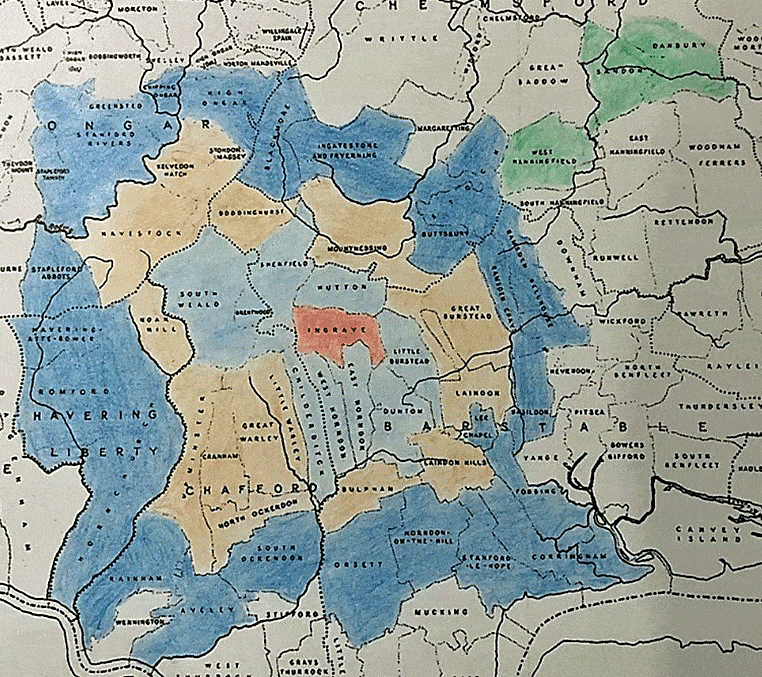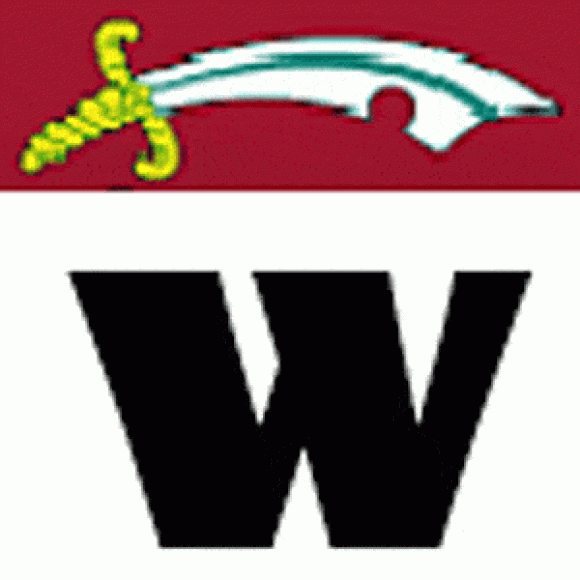Ring Project Reports

Between 1600 and 1800 the Petre family was the center of Catholicism in Essex. The Ring project examines parishes in relation to their proximity and social ties to Thorndon Hall, the seat of Lord Petre during the 18th century. The sphere of Lord Petre provided protection for all nonconformists. Catholics, Quakers, and Independents were at times dinner guests of Lord Petre and these events were sometimes reported in the Essex Chronicle. The quiet yet persistent dissention of the Petre family set an example for civil disobedience. Nonconformists of Essex were divided over theology but united in the desire to worship as their faith directed.
Catholic Population of Essex
The 1706 Survey of Papists in Essex documents that 116 Catholics lived in the parishes of Ingatestone, Stock, Buttsbury, Mountnessing, Fryerning and Margaretting, plus another 187 Catholics living outside this cluster. Father Stewart Foster, the Archivist of the Brentwood Cathedral, uses a broader set of sources to reason that the Catholic population of Essex in 1706 might have been as high as 600 (The Catholic Church in Ingatestone, Stewart Foster, page 40). Sixty years later, the 1767 census Papists finds that 719 Catholics resided in Essex, concentrated in a few parishes around Ingrave, with 287 parishes of Essex having no Catholics within their boundaries. On the 1767 census of Papists, 210 or 30 % of Catholics resided in the five parishes of West Horndon, Ingrave, East Horndon, Ingatestone, and Fryerning. An additional 147 or 20% of Catholics reside in the parishes immediately surrounding them.
GENERAL POPULATION STATISTICS
SEATS OF LORD PETRE

FIRST RING

SECOND RING

THIRD RING






Stagecoach Travel
In 1750 the stagecoach was the fastest mode of travel. Sakhalinsk’s article, using Dauton’s study of travel times in 1750 (Daunton, 1995), calculates that a trip from Thorndon Hall to London would have taken three days, weather permitting. “Most people only travelled as part of their job – traders, mule trains, that sort of thing – or perhaps when at war or on pilgrimage. In general, transport of goods and people was by water, normally along shallow coastal routes, but some rivers were freely navigable. On average you were unlikely to stray more than 10 miles from the town in which you were born” (The Growth of British Transport: 1720-1850, Sakhalinsk https://grandemotte.wordpress.com/ 2013/04/15/the-growth-of-transport-1720-1850/).
Ring Project Reports
Seats of Lord Petre
First Ring in 1801
Second Ring in 1801
Third Ring in 1801
The seats of the Petre family were Ingatestone Hall, Writtle Park, and Thorndon Hall (Ingrave, Essex). Catholics lived near the Petre family for refuge and opportunity.
4,951 individuals lived in parishes such as Brentwood, South Weald, Hutton, Great Burstead, East Horndon, Shenfield, Dunton, and Childerditch.
4372 individuals lived in parishes such as Bulphan, Doddinghurst, Mountnessing, Great Warley, Upminster, Keveldon Hatch, and Stondon Massey.
14,128 individuals lived in parishes such as Ingatestone, Fryerning, Buttsbury,Orsett, Hornchurch, Romford, Stamford Rivers, High Ongar.
Lorde Petre
Coming 2024
First Ring
Coming 2024
Second Ring
Coming 2024
Third Ring
Coming 2024
